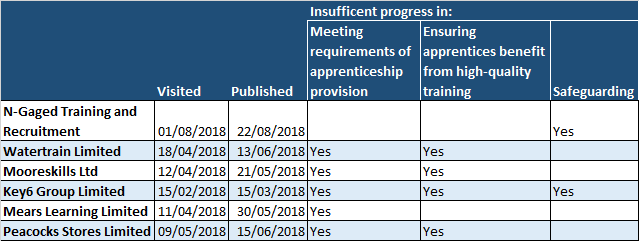Poorly performing new apprenticeship providers will now only be left in no new business limbo for up to a year – not three, as Ofsted had previously said.
The U-turn was confirmed today by Paul Joyce (pictured above), the education watchdog’s deputy director for FE and skills.
“Where providers are judged to be making insufficient progress on their monitoring visit we will now usually return within six to 12 months to undertake a full inspection,” he said.
“Our inspection handbook will be updated shortly to reflect those changes.”
All new apprenticeship providers that are found to be making ‘insufficient progress’ in at least one theme under review following an early monitoring visit are now barred from taking on new apprentices, according to Education and Skills Funding Agency guidance published in August.
That restriction will remain in place until the provider has had a full inspection, resulting in a grade of ‘requires improvement’ or above for their apprenticeship provision.
The move is expected to be welcomed by the Association of Employment and Learning Providers, which had criticised the lack of clarity from Ofsted following the new ESFA policy announcement.
FE Week reported that these rules could leave poor-performing providers in limbo for up to three years, as Ofsted told FE Week they planned to stick to the existing rules around carrying out full inspections.
These state that it will carry out a full inspection within three years of a provider starting its first apprentice.
At the time, AELP chief policy officer Simon Ashworth told FE Week: “We definitely need greater clarity on what happens next whether it’s a future monitoring visit or a full inspection where the provider has to get at least a grade three.
“An absence of transparency over timing does appear to leave providers in limbo although the importance of good quality provision for learners must be our topmost priority.”
The change in policy comes as Ofsted has revealed that the Department for Education has agreed to give it extra cash to carry out early monitoring visits of all new apprenticeship providers.
That move came almost four months after FE Week reported it was on the cards, following embarrassment for the government over accountability for apprenticeship quality.
“The additional funding confirmed today will allow us to extend our monitoring visits of new apprenticeship provision to all new entrants to the sector,” Mr Joyce said.
“We believe this will provide important extra reassurance on quality of provision for all those taking up apprenticeships.”


